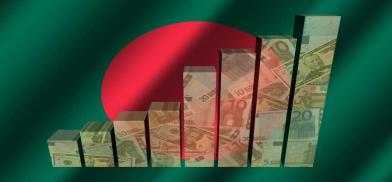Is Bangladesh heading for stagflation?
Bangladesh is going through a tough economic situation; the government’s two largest sources of foreign currency revenues are the export of readymade garment products and remittances from overseas. Remittances are already suffering

Stagflation is a real fear now in Bangladesh as the global growth rate is expected to slip, the fuel market remains unstable and global inflation rises. These symptoms are considered the possible cause of stagflation. Stagflation is a situation where the economic growth rate is slow, accompanied by high unemployment (economic stagnation) and mixed with rising price levels (inflation).
British Conservative politician Iain Macleod said in November 1965: "We now have the worst of both the worlds -- not just inflation on the one side or stagnation on the other, but both together. We have a sort of ‘stagflation’ situation.” Now it is proven that stagflation is real and can have a devastating effect on the economy.
Why stagflation?
Economists have suggested a number of theories for what causes stagflation:
A sudden decrease in the supply of services and commodities leads to a dramatic increase in prices. Consequently, most of the companies’ profit margins reduce and it slows economic growth.
Poor economic policy often leads to stagflation. The government and central bank attempt to regulate the economy but often end up taking wrong decisions.
A sudden rise in oil prices causes a reduction in economic productivity. Due to the rise of fuel prices, transportation costs increase. Consequently, commodities become more expensive and peoples’ purchasing ability decreases.
Bangladesh reality
Is there any possibility Bangladesh will have to face stagflation?
Bangladesh is going through a tough economic situation; the government’s two largest sources of foreign currency revenues are the export of readymade garments and remittances from overseas. Remittance inflows are already suffering in the last few months.
The garments industry may face a tough situation as the top destination markets are also facing a hard time economically. Inflation in the US and the UK have hit new 40-year highs. This will affect consumers’ buying power. It is a bad sign for Bangladesh's readymade garment exporters.
Remittance inflows have fallen. Consequently, Bangladesh's foreign exchange reserves fall below $40 billion for the first time in nearly two years.
Economic indicators
In fiscal 2022-23, the budget deficits are about 5.5 percent, this gap will be filled by borrowing. Already Bangladesh is seeking loans from the World Bank and the IMF to meet the deficit.
The government has decided on two hours of daily power cuts due to power shortage. Electricity production has decreased due to a higher price paid for fuel in the international market.
Over the last few months, the central bank has devalued BDT (Bangladesh taka) against the USD by about 10.37 percent -- a record.
The current inflation rate has increased to 7.56 percent (point to point), from 5.64 percent in June 2021.
Fuel prices
The government has allowed a rise in fuel prices. This may lead to a further increase in the inflation which will badly impact employment and overall economic growth.
Higher inflation indicates higher unemployment. This will be stagflation. To avoid such a situation, the Bangladesh government and policymakers have to be more careful while taking economic decisions. Otherwise, the devastating recession may affect economic growth and employment.
(The author is a student, Department of Finance, University of Chittagong. Views are personal. He can be contacted at junaid.rahman.edu@gmail.com)










Post a Comment